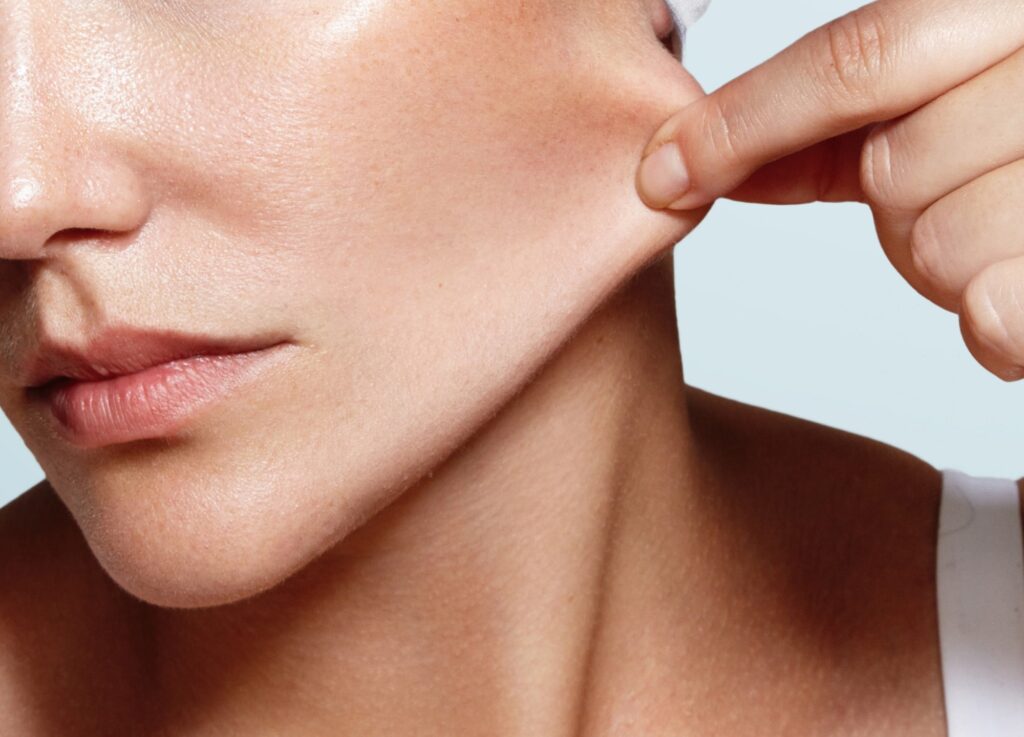What to Know About “Ozempic Face”

In recent months, you might have heard the buzzword “Ozempic face” popping up on social media or from friends who are on weight-loss journeys. But what exactly is “Ozempic face,” and should you be concerned if you’re using the drug? In this comprehensive guide, we’ll explore everything you need to know, from how Ozempic works to how it might affect your face, and what you can do about it.
Understanding Ozempic
What Is Ozempic?
Ozempic is a medication primarily prescribed to manage Type 2 diabetes. It helps regulate blood sugar levels by mimicking a hormone called GLP-1, which stimulates insulin production in the pancreas. However, Ozempic has also gained attention for one of its side effects: weight loss. Because of this, it’s increasingly being used off-label by individuals looking to shed pounds.
How Ozempic Works
Ozempic works by slowing down the emptying of the stomach, making you feel fuller for longer. It also reduces appetite by acting on the brain’s hunger centers. This combination leads to reduced food intake and, in many cases, significant weight loss. But as with any weight-loss drug, rapid changes to your body can have unintended consequences.
The Rise of “Ozempic Face”
What Is “Ozempic Face”?
“Ozempic face” is a term coined to describe the noticeable change in the appearance of the face after rapid weight loss. It typically refers to facial volume loss, sagging skin, and more pronounced wrinkles. As the body loses fat, the face is one of the first places to show it, leading to a more aged appearance.
Why Is It a Concern?
While weight loss is often the goal for those taking Ozempic, no one really expects to lose facial volume along with body fat. For many, this can lead to concerns about looking prematurely aged. The sudden change in facial appearance has prompted some people to stop using the medication altogether or seek cosmetic treatments to restore their youthful look.
The Science Behind “Ozempic Face”
Fat Loss and Its Impact on the Face
The face has a delicate balance of fat pads that give it a youthful and plump appearance. When you lose weight, the fat in your face diminishes, which can make the skin look looser and less firm. This can result in hollow cheeks, sunken eyes, and a more pronounced jawline—symptoms that have come to be associated with “Ozempic face.”
Rapid Weight Loss and Skin Elasticity
One of the main reasons “Ozempic face” becomes so pronounced is due to the rapid nature of the weight loss. The skin needs time to adjust, and when the fat disappears too quickly, the skin doesn’t always have the elasticity required to bounce back. This leads to sagging and wrinkles that can be hard to reverse without intervention.
Cosmetic Effects of Weight Loss
Volume Loss in the Face
As fat disappears from the body, it doesn’t discriminate. The volume in the cheeks, around the eyes, and even in the neck area can reduce significantly. This facial volume loss is what contributes to the sunken look that many people describe when they mention “Ozempic face.”
Sagging Skin and Wrinkles
In addition to volume loss, the skin may sag, and wrinkles may become more prominent due to the lack of underlying support. If the skin loses its elasticity and cannot tighten up naturally, it can leave behind lines and folds that were previously hidden by fat.
Who Is Most Likely to Experience “Ozempic Face”?
Age and Skin Elasticity
The risk of developing “Ozempic face” increases with age. Younger individuals tend to have more elastic skin that can better adapt to weight loss. However, for those over 40, the skin may not retract as easily, leading to a more pronounced sagging effect.
Long-Term Ozempic Users
The longer you use Ozempic or any weight-loss drug that causes rapid fat reduction, the more likely you are to experience facial changes. Extended use often leads to more pronounced fat loss across the body, which naturally affects the face.
Combating “Ozempic Face”
Cosmetic Treatments to Address Facial Volume Loss
If you’re concerned about the changes in your face, there are cosmetic treatments available that can help restore volume. Dermal fillers, for example, are popular for plumping up areas like the cheeks and under the eyes. Botox can also be used to smooth out wrinkles, giving your face a fresher look.
Skincare Routines to Improve Elasticity
For those who prefer a non-invasive approach, adopting a good skincare routine that focuses on improving elasticity can be beneficial. Products rich in collagen, retinoids, and hyaluronic acid can help tighten the skin and reduce the appearance of wrinkles. Consistent use over time can help your skin regain some of its former bounce.
Can “Ozempic Face” Be Prevented?
Maintaining a Healthy Balance
The best way to prevent “Ozempic face” is to lose weight gradually rather than rapidly. This allows your skin to adjust slowly, minimizing the sagging and volume loss that often comes with faster fat reduction. Consult with your healthcare provider to ensure you’re losing weight at a safe and sustainable pace.
Consulting with a Healthcare Provider
Before starting any weight-loss treatment like Ozempic, it’s crucial to have a discussion with your doctor. They can help you set realistic goals and may provide advice on how to minimize the unwanted side effects, like “Ozempic face,” while still achieving your desired weight loss.
The Role of Medical Supervision When Using Ozempic
Importance of a Doctor’s Guidance
Using Ozempic under medical supervision is essential, especially when it comes to managing side effects like “Ozempic face.” Your doctor can monitor your progress and make adjustments to your treatment plan if necessary, ensuring you get the best results without compromising your appearance.
Monitoring Side Effects
Regular check-ins with your healthcare provider will also allow you to keep track of any side effects. If you start noticing changes in your face or elsewhere on your body, they can offer solutions or suggest complementary treatments to help mitigate the effects.
Conclusion
“Ozempic face” is a side effect that may occur when using Ozempic for weight loss, particularly if the weight loss happens rapidly. While it can be concerning to notice changes in your facial appearance, there are both preventative measures and treatments available to help manage the situation. From cosmetic interventions to simple skincare routines, you can take steps to maintain your youthful appearance while still achieving your weight-loss goals.



